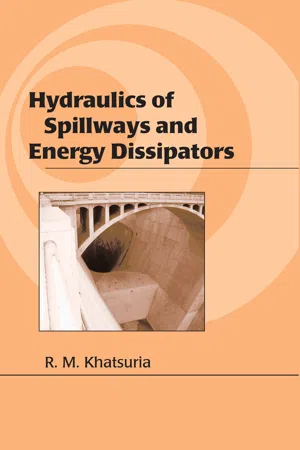Cavitation
Cavitation is the formation and collapse of vapor bubbles in a liquid due to rapid changes in pressure. In engineering, it can occur in pumps, propellers, and other fluid systems, leading to erosion and damage. Understanding and managing cavitation is important for designing efficient and durable fluid-handling equipment.
6 Key excerpts on "Cavitation"
- eBook - ePub
Laser Dentistry
Current Clinical Applications
- World Federation for Laser Dentistry(Author)
- 2018(Publication Date)
- Universal-Publishers(Publisher)
...a small liquid free zone (bubble or void). These bubbles are the consequence of forces acting upon the liquid. The phenomenon is termed Cavitation inception and may occur behind the blade of a rapidly rotating propeller or on any surface vibrating underwater with sufficient amplitude and acceleration. Other ways of generating Cavitation voids involve the local deposition of energy, such as an intense focused laser pulse. Vapor gases evaporate into the cavity from the surrounding medium; thus, the cavity is not a perfect vacuum, but has a relatively low gas pressure. Such a low-pressure Cavitation bubble in a liquid begins to collapse due to the higher pressure of the surrounding medium. As the bubble collapses, the pressure and temperature of the vapor within increases. The bubble eventually collapses to a minute fraction of its original size, at which point the gas within it dissipates into the surrounding liquid via a rather violent mechanism which releases a significant amount of energy in the form of an acoustic shock wave and as visible light. At the point of total collapse, the temperature of the vapor within the bubble may be several thousand kelvin, and the pressure several hundred atmospheres. Inertial Cavitation also occurs in the presence of an acoustic field. The physical process of Cavitation inception is similar to boiling. The major difference between the two is the thermodynamic paths that precede the formation of the vapor. Boiling occurs when the local vapor pressure of the liquid rises above its local ambient pressure and sufficient energy is present to cause the phase change to a gas...
- Prem Prakash Srivastav, Deepak Kumar Verma, Ami R. Patel, Asaad Rehman Al-Hilphy, Prem Prakash Srivastav, Deepak Kumar Verma, Ami R. Patel, Asaad Rehman Al-Hilphy(Authors)
- 2020(Publication Date)
- Apple Academic Press(Publisher)
...CHAPTER 8 Hydrodynamic Cavitation Technology for Food Processing and Preservation NAVEEN KUMAR MAHANTI, 1 SUBIR KUMAR CHAKRABORTY, 2 S. SHIVA SHANKAR, 3 and AJAY YADAV 4 1 Agricultural Processing and Structures Division, Indian Agricultural Research Institute, New Delhi, India, E-mail: [email protected] 2 Agro Produce Processing Division, ICAR-Central Institute of Agricultural Engineering, Bhopal, Madhya Pradesh, India, E-mail: [email protected] 3 Department of Post-Harvest and Food Engineering, G.B. Pant University of Agriculture and Technology, Udham Singh Nagar, Pantnagar, Uttarakhand, India, E-mail: [email protected] 4 Scientist, Center of Excellence for Soybean Processing and Utilization, ICAR-Central Institute of Agricultural Engineering, Bhopal, Madhya Pradesh, India, E-mail: [email protected] 8.1 INTRODUCTION The Cavitation refers to the generation and growth of cavities and their subsequent disintegration within an extremely small fraction of time, which emits energy of larger magnitude at the transformation. The reactor faces a very high temperature (1000–10,000 K) and pressure (100–500 bar) during the process of Cavitation (Suslick, 1990). Generally, the Cavitation can be produced using different techniques like acoustic, hydrodynamic, optic, and particle out of which the hydrodynamic and acoustic technologies are quite popular, whereas the optic and particle technologies are lagging to carry out the required physicochemical modifications in bulk solution. However, the latter two techniques are preferred in single-bubble Cavitation (Gogate, 2011). At a laboratory-scale, the ultrasound is widely used Cavitation technology; however, it is limited for industrialization (Moholkar and Pandit, 2001b)...
- eBook - ePub
- Rajnikant M. Khatsuria(Author)
- 2004(Publication Date)
- CRC Press(Publisher)
...This is vaporous Cavitation. Another example of Cavitation is seen when bubbles form in a glass from a freshly poured carbonated drink. In a sealed bottle, the carbon dioxide is kept in solution under a high pressure. When the bottle is opened, the pressure is decreased and the carbon dioxide begins to diffuse out and form voids. This is called gaseous Cavitation. It should be noted here that voids are formed although vapor pressure in the liquid is not reached. Gaseous Cavitation is observed in flowing water with low-flow velocities and high-gas contents. In hydraulic struc-tures, vaporous Cavitation is normally the most important parameter. As velocities increase, the effect of gas contents decreases. Generally, water that passes through hydraulic structures is frequently drawn from the lower strata of the reservoir, where the air content is low. In model studies, velocities are low, so some problems can be expected when scaling model results to prototype values. In addition to considering the contents of the void (vapor or gas), one could also describe Cavitation by its occurrence. For instance, with flow in a venturi, a region of low pressure is formed in the throat of the venturi. As the flow rate is increased, the pressure is reduced. At some critical value of the flow, the water in the throat begins to vaporize. This vaporization takes place first at local weaknesses in the liquid, which are called Cavitation nuclei. This onset of vaporization is called incipient Cavitation. If the flow rate is further increased, the volume of voids, which appear as small bubbles, also increases. At some other critical value of the flow rate, the many small bubbles suddenly form one large void. The developed void is known as a cavity flow, developed Cavitation, or superCavitation. Once superCavitation forms in venturi or downstream from an inline orifice, the flow rate cannot be increased. This is called choking of the flow...
- Ron Palgrave(Author)
- 2019(Publication Date)
- Butterworth-Heinemann(Publisher)
...Even though the impeller will suffer damage it occurs so slowly that the impeller will often fail by other means, such as erosion, or corrosion. Avoiding Cavitation completely in such cases will incur unnecessary costs. It will solve a problem that does not really exist in practice. Fig. E.1 Conceptual pressure distribution on impeller blade of a pump operating near to its design flow. The differential pressure acting over the blade wetted surface area is responsible for creating most of the torque that the pump drive must overcome. In the past, Cavitation was the sometimes blamed as the root cause when all other explanations failed. Nowadays we better understand both the cause and effects of Cavitation and it is not a subject worthy of oversimplification. Outwardly it makes its presence felt in a number of ways, depending on the severity or intensity. At first, I will describe Cavitation in simple terms. Then I will elaborate a little on its effect, both in terms of machine performance and then on impeller life. Cavitation Part 1 – simple description Cavitation describes the occurrence, in a liquid, of vapour bubble. We are familiar with the ‘singing’ sound of a boiling kettle. This is actually the noise of Cavitation developing at local hot spots. In a kettle containing water, this boiling point occurs at 100 deg. C if, and only if the local atmospheric pressure equates to a standard set of values. However, if for example the local atmospheric pressure is reduced, then the water will boil at a lower temperature. It is for this reason that it can be impossible to produce a good cup of tea or coffee on a mountain top, for example. This is because the water appears to boil at less than 100 °C, due to the lower local atmospheric pressure. But the local atmospheric pressure can reduce in other ways. If for example the velocity of a liquid stream is accelerated, then its local static [or atmospheric] pressure, as measured by a gauge, will reduce [Bernoulli's Law]...
- eBook - ePub
- Shutilov(Author)
- 2020(Publication Date)
- CRC Press(Publisher)
...VI. Ultrasonic Cavitation § 1. Rupture strength of liquids The term Cavitation refers to the formation and collapse of cavities (holes) in a liquid. In general, Cavitation can appear with any local rarefaction in liquids: in a hydrodynamic flow, in flow past solids, in a wake, etc. In an acoustic wave, which creates periodic rarefaction, Cavitation is observed at very high wave intensities, which are realized at ultrasonic frequencies. It is thus a characteristic feature of ultrasound and is called ultrasonic Cavitation. Because in Cavitation the continuity of the medium is destroyed this phenomenon must also be regarded as a nonlinear effect. In general terms, the elementary act of ultrasonic Cavitation can be represented as follows. During the rarefaction phase of an ultrasonic wave, a hole filled with the saturated vapor of the liquid forms in the liquid. During the compression phase the vapor condenses and the cavity collapses under the high pressure, which is “helped” by the surface tension of the walls of the cavity, as if the cavity were empty. Some of the gas dissolved in the liquid, which during rapid collapse is subjected to strong adiabatic compression, diffuses into the cavity through its surface. At the instant of collapse the pressure and temperature of the gas reach considerable magnitudes, which leads to the formation of a secondary spherical shock wave, decaying rapidly in space, in the surrounding liquid. Cavitation processes play an important role in practical applications of ultrasound; for this reason, a great deal of attention is devoted to the study of ultrasonic Cavitation. Although a number of problems in Cavitation remain unsolved, its physical nature as a whole has now been studied in detail...
- eBook - ePub
Mechanics of Flow-Induced Sound and Vibration, Volume 1
General Concepts and Elementary Sources
- William K. Blake(Author)
- 2017(Publication Date)
- Academic Press(Publisher)
...The essentials are well known and have dealt with four phenomena that in some way are relevant to the subject of hydrodynamic Cavitation inception and collapse: a steady bubble growth or solution in a quiescent liquid that is either supersaturated (so the bubble will grow) or undersaturated (so the bubble will dissolve) [39, 64, 71] ; a bubble that is fixed (as bonded to a surface) while being scrubbed by a moving liquid in which case it grows by “convective diffusion” [72, 73] ; a bubble in an otherwise quiescent liquid that is excited with an oscillating pressure (as for example generated by an acoustic transponder) in which case it may grow by a process called rectified diffusion [ 48, 61, 74 – 79 ]; and finally a bubble that expands in a liquid as by vaporous Cavitation during which a small quantity of gas is diffused into the bubble [80]. This diffused gas may later limit the collapse radius of the bubble. These processes all rely on the fact that gas will come out of solution whenever the partial pressure of gas in the bubble, p g, is less than the equilibrium pressure of dissolved gas in the solution. What is relevant to hydrodynamic Cavitation and Cavitation noise is that the critical pressure (as we shall see, the Cavitation inception pressure) is dependent on the bubble sizes in suspension in the flowing liquid. This becomes important in the generation of sound will be shown to be governed by bubble collapse and bubble collapse and rebound are known to be dependent on the partial pressure of undissolved gas in the bubble when it has expanded. As with the onset of vaporous Cavitation, the onset of diffusion of gas out of solution into the bubble to generate gaseous Cavitation or the growth of gas-filled bubbles involves a critical pressure. This pressure depends on both the sizes of the bubbles in suspension and the concentration of dissolved gas...





